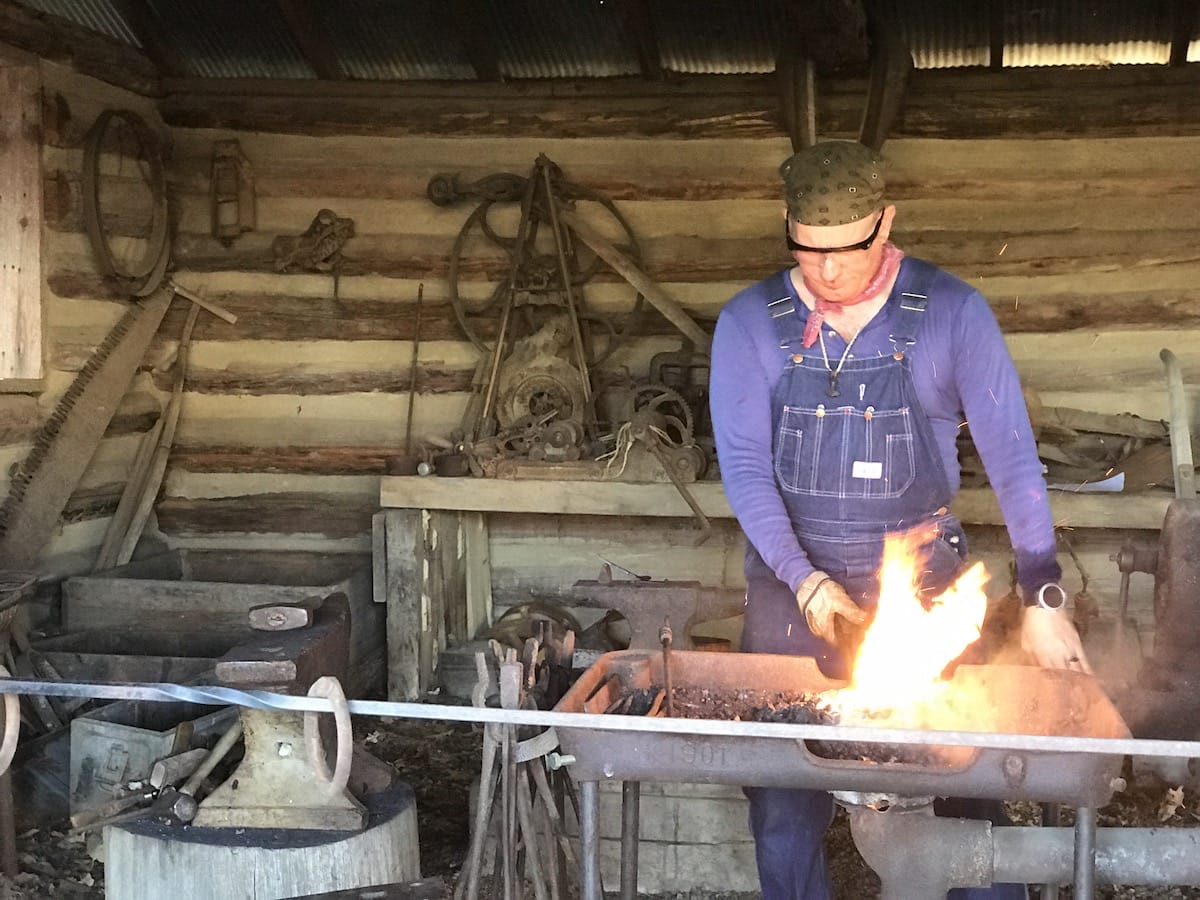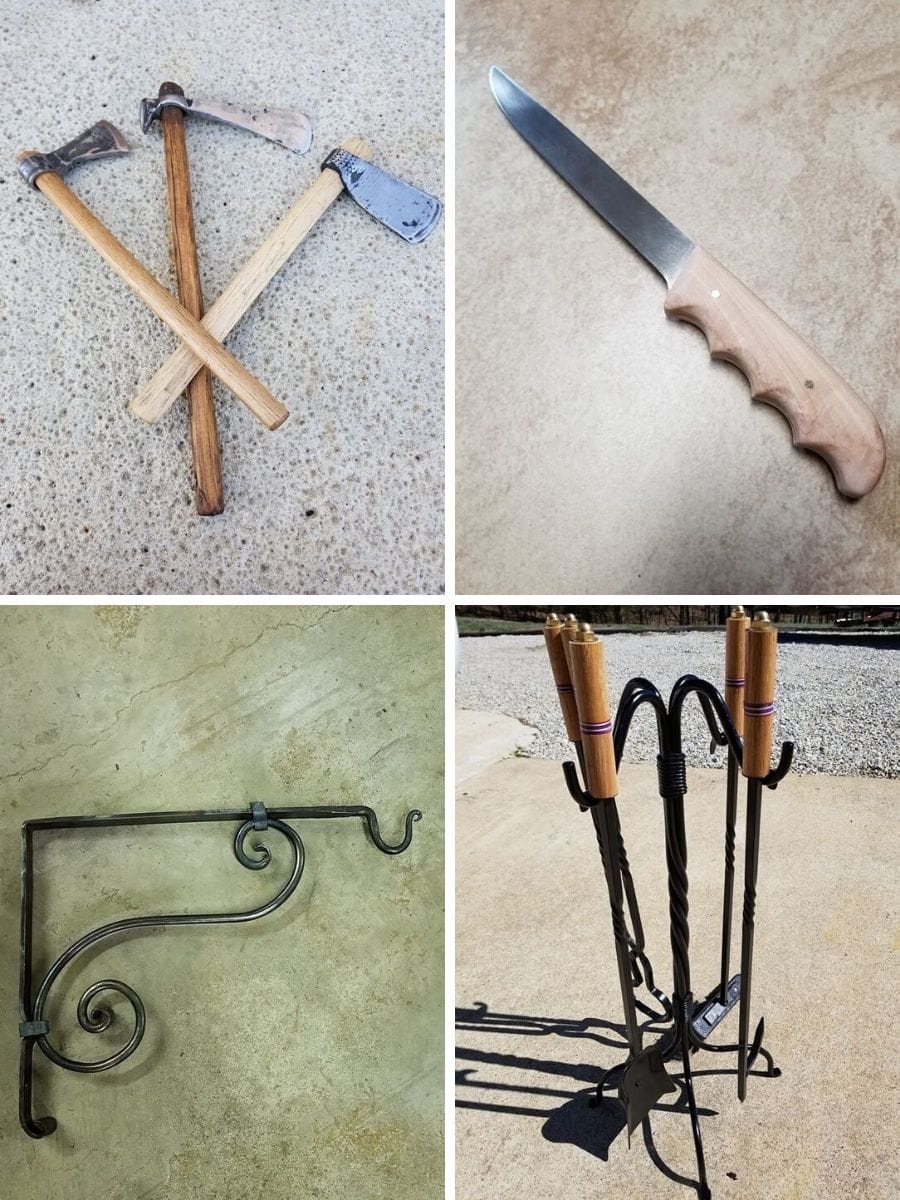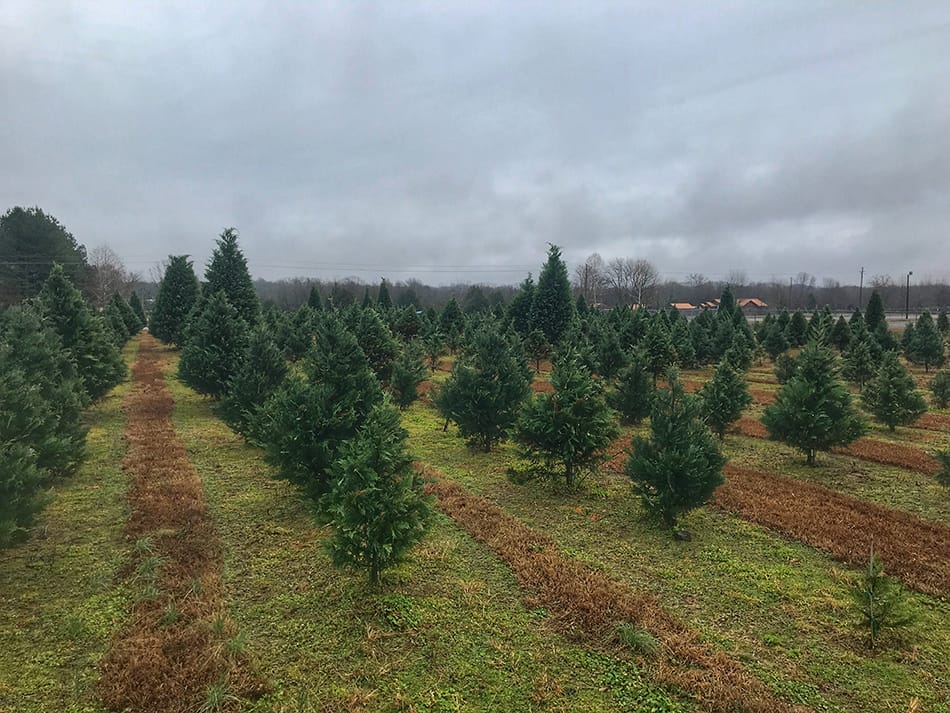

Uh oh...
It appears that you're using a severely outdated version of Safari on Windows. Many features won't work correctly, and functionality can't be guaranteed. Please try viewing this website in Edge, Mozilla, Chrome, or another modern browser. Sorry for any inconvenience this may have caused!
Read More about this safari issue.

The ping of the hammer is music to my ears. The smell of the hot metal is enticing. Even in summer, I love the flow of fire and from a distance, the feeling of the heat coming off the forge. When visiting historical attractions in Arkansas, the blacksmith shop within is the place I most want to visit.
Long before “Forged in Fire” brought blacksmithing and bladesmithing to popularity via television, individuals all over the state have been gathering together to make and create, all while preserving a bit of American history.
Whether exploring the Pioneer Village in Searcy, visiting the Ozark Folk Center in Mountain View, or touring the Historic Arkansas Museum in Little Rock: the craft of blacksmiths most welcomes my attention and appreciation. Those affiliated with Northeast Arkansas Blacksmiths help to preserve this bit of American history.
Blacksmith History
America’s most famous blacksmith is a household name. John Deere, a Vermont blacksmith by trade, found himself making the same repairs to plows over and over again. Determining that the wood and metal design common to plows in the 1830s was inefficient, Deere began to experiment with a new plow design and, in less than eight years, went from making his first plow to selling over 1,000. In 1846, Deere moved his company to Moline, Illinois, doubled his sales and began crafting a full line of farming implements.

Just as John Deere completely changed the farming industry, blacksmiths were the lifeblood of many communities in the pioneer days. When a new community formed, a blacksmith was essential to its survival. A community could function without a school teacher, a preacher or a doctor, but not having a blacksmith would exponentially increase the settlement’s failure rate.
If we allow such trades to go by the wayside as advanced technology takes over, we are at risk of losing connection with our ancestors. So while a television show may have fueled the fire, modern-day blacksmiths are fanning the flames.
Northeast Arkansas Blacksmiths
The Northeast Arkansas Blacksmiths group was initially a chapter of the Blacksmith Organization of Arkansas. A year ago, they decided to take their club in a different direction and branched out on their own. Now with over 50 members, the club activities and community involvement are evidence of their motto, “preserving history.”

The Northeast Arkansas Blacksmiths include men, women and children who gather together to have fun, practice their craft and learn together. They regularly perform demonstrations at local fairs and festivals and Crowley’s Ridge State Park. They recently gave a schoolwide demo at the Nettleton STEAM Academy in Jonesboro.
According to Northeast Arkansas Blacksmiths president Jim Soehlman, people are showing interest in blacksmithing because they “like that they can create something useful. It’s dangerous but so rewarding, and people can spend a lot of money or very little money to get started. So it is a hobby for everybody.”
John Johnson, the group’s vice president, said, “Blacksmithing is a great way to keep people interested in history.” Along with that history comes a group of members, each with their own interesting background and connection to the craft.

Jim Soehlman – Club President
Soehlman became involved in the craft when he and his father began collecting blacksmithing tools. Eventually, he developed what has become a lifelong hobby.
Considering himself a “functional blacksmith,” Soehlman primarily makes tools and custom functional pieces. He loves making blacksmithing tools like tongs and guillotines but can also craft sconces and fireplace toolsets. One of his recent favorite projects was crafting a set of specialty hooks for a restored chuckwagon from 1807.
Soehlman’s work can be seen on his Facebook page, Forge on the Faultline.

John Johnson – Club Vice President
A welder by trade, Johnson first became interested in blacksmithing when he came across an online video of someone crafting a tomahawk out of a railroad spike. He joined Northeast Arkansas Blacksmiths because it allowed him to learn from other people.

Johnson built his own forge and began crafting furniture, art, and, of course, tomahawks. It wasn’t long until Johnson had his whole family involved. His daughter, high school senior Melody Young, has been working the forge for three years and enjoys making music notes.
Although Johnson tends to sell pieces during various holidays, he plans to keep blacksmithing a hobby, “for me, this is a safe place where everything makes sense.”

Randel McCoy – Club Secretary
McCoy’s father had a forge, so he grew up interested in blacksmithing and bladesmithing. McCoy is a welder and fabricator and enjoys working with metal. Although work often gets in the way, McCoy enjoys making small decorative items and knives.
McCoy’s passion lies in teaching others the trade, which is part of what draws him to Northeast Arkansas Blacksmiths. “We love teaching others, especially kids. It really is the whole purpose of the group.”
Monthly club meetings nearly always have children in attendance, including their youngest member, aged 10. The group regularly works with children, and McCoy has taught his three daughters, aged 9, 10 and 11, to work the forge. He also works with his fiancé’s young grandson.

JD Edwards – Club Member
Edwards doesn’t consider himself a master craftsman, but his work may tell a different story.
Growing up as the child of migrant sharecroppers, Edwards saw the need for blacksmithing firsthand. Nearly every farm they passed through as his parents worked their way across the country had a blacksmith and a farrier. He began working the farms himself at age 13 and picked up skills from other workers.
When he was 17, Edwards joined the 82nd Airborne Division of the U.S. Army, which specializes in parachute assault missions. Disappointed in the quality of the knives he was issued, he drew on his skill with a forge and began making his own. Edwards’ successful military career, which took him all over the world, came to an end when he suffered a severe injury following a parachute failure.
Over the next few years, healing took priority, and Edwards worked a variety of other jobs until his son was deployed to Iraq along with the Army National Guard Infantry Batillion of the 39th Infantry Brigade known as the Bowie Brigade. Once again disappointed in the quality of the issued equipment, Edwards went home and set up a forge in his living room so he could make knives for his son and others in his batillion. After he crafted 250, Edwards said, “It just lit a fire in me. Those knives made [those soldiers’] lives special.”

Edwards has become well-known in the blacksmithing and knife-making community and continues to forge because “it pays the bills.” He’s humble about his work, though the quality and beauty of the pieces speak for themselves. Edwards’ work has appeared in “Blade Magazine.”
Edwards was the blacksmith at the Ozark Folk Center for several years and now works on his own as well as a bladesmithing and blacksmithing instructor. You can connect with Edwards on his Facebook page Arkansas Knifemaker Renegade Forge.
Interested In Blacksmithing?
Every member of Northeast Arkansas Blacksmiths would agree that the best way to get started is to find a mentor. While the internet can provide a lot of valuable resources, a practicing blacksmith is ideal. They hold monthly meetings that are open to anyone who wants to attend and can join the Facebook group to connect with other members and learn more about upcoming events.
Join the Conversation
Leave a Comment
One response to “Preserving History with Northeast Arkansas Blacksmiths”
 Leave a Reply
Leave a Reply
We do the work.
You check your email.
Sign up for our weekly e-news.
Get stories sent straight to your inbox!












 Leave a Reply
Leave a Reply
[…] On Oct. 9 and 10 and Oct. 16 and 17, visitors can tour the buildings and collections. They can see living history demonstrations of broom making, blacksmithing, corn milling, sorghum making, quilting and more. The demonstrations are made possible by local individuals, area farmers and groups like the Northeast Arkansas Blacksmiths. […]